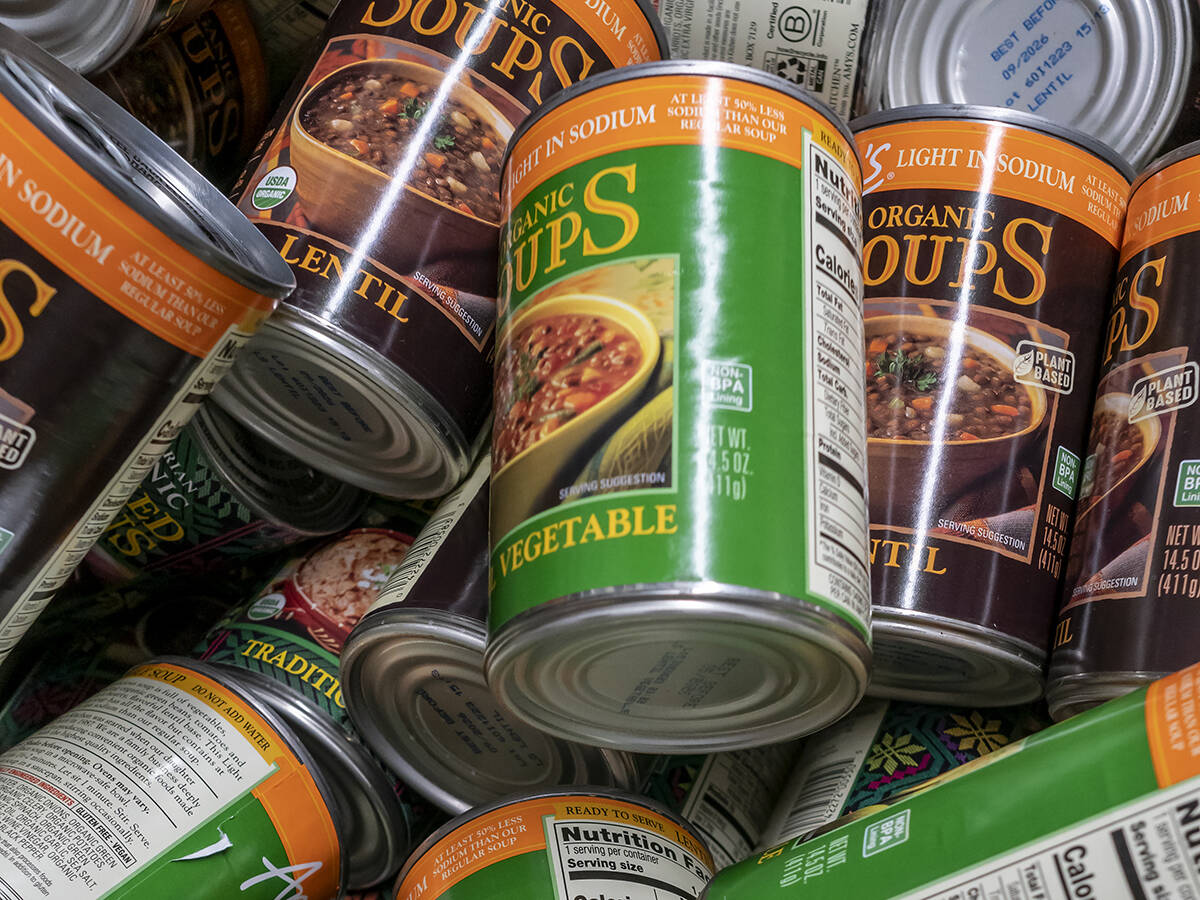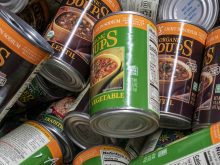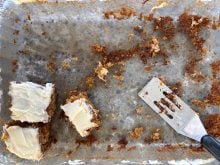Over the years, we have been told by friends and relatives of their train trips to Churchill, Man. That inspired us to do the same and it certainly wasn’t a disappointment.
An early morning rise to catch the train at Hudson Bay, Sask., started the holiday. The train moved slowly as it inched its way over the muskeg. A night sleeping sitting up in a train car with 60 other people proved interesting.
Who snores and who does not fueled the next morning’s conversation.
There was always the dining car to go to for good food or for a change of scenery and a smoke, for those inclined. We all were happy to reach our destination.
Read Also

Sustainable food has ‘lost all meaning’: prof
That marketing strategy is deader than a doornail, says a University of Guelph professor who specializes in consumer preferences and perceptions of agriculture and food.
While at the town of Churchill, we had three full days of tours, shopping, eating and seeing the sights. We were all in awe with the Eskimo museum.
Yes, we did see polar bears. They look so cuddly with their beautiful, white fur coats. However, we soon learned that they are dangerous. They see people as food. I guess we would be a change from their normal diet of seals.
Our first sense of the danger came during a tour to Fort Prince of Wales. The fort is on a rocky peninsula beside the townsite.
A young lady protected us by constantly circling around on a quad bike watching for any bears that might show up. She was carrying a loaded gun, as was our tour guide.
The bears swim in from the ice and land on the rocky coast. By October and November, many bears have come off the ice and congregate in the Churchill area. At that time, the town is busy with tourists hoping to see the bears. Tundra buggies keep people high off the ground for safe viewing.
The Port of Churchill had two ships loading grain from prairie farmers. The grain had also made its way there by train. Churchill’s shipping season runs from July to November.
A boat ride from the town down the bay to the mouth of Churchill River took us to see the big white beluga whales. The whales gather in that area because the bay is warmed by the river water entering there. They bobbed, dipped and dived all around our boat. Everyone tried to take pictures, which was difficult as they slide in and out of the water so quickly.
Other activities included a bus tour of the townsite and a ride on a tundra buggy to go into the countryside to see the vegetation, birds and animals. We stopped for a barbecue lunch out on the tundra. Some ventured higher and took a helicopter ride.
By the time we left for home, we had learned a lot about one another. The ride home seemed shorter because of the interesting conversations and the fun we had with those who had joined us on this interesting trip. We were glad we had chosen to take this preharvest jaunt to Churchill.
Making mixes
Dear TEAM: I am looking for a homemade cake mix that could be used in place of the commercial ones in a recipe. Also, I have never come across a recipe that would be the equivalent of the commercial refrigerated biscuit dough. Both of these are expensive and I am sure they could be prepared in the home kitchen quite easily if the recipes were available. -R.Z., Cecil Lake, B.C.
Dear R.Z.: Make-a-Mix by Karine Eliason, Nevada Harward and Madeline Westover is a cookbook for making your own mixes. There are 68 different mix recipes in the cookbook, ranging from the dry mixes that contain only dry ingredients, to semi-dry that have shortening, butter or margarine added, to freezer-refrigerator mixes that are moist and require cold storage and special mixes for everything from hot chocolate to chili and salad dressings.
These basic mixes are primary ingredients needed to make quick delicious dishes.
Commercial refrigerated biscuit dough has been packaged in a way that we cannot make at home. A dough leavened with baking powder, baking soda and yeast will rise if put in the refrigerator, unless packaged under special conditions.
From the Make-a-Mix cookbook is the following cake mix recipe. For additional recipes, Make-a-Mix, published by Fisher Books, l995, can be purchased at bookstores for $23.95 or look for it at your library.
All-purpose cake mix
10 cups all-purpose flour 2.5 L
6 1/4 cups sugar 1.5 L
1 cup cornstarch 250 mL
5 tablespoons baking 75 mL
powder
1 tablespoon salt 15 mL
2 1/2 cups vegetable 625 mL
shortening, butter or margarine
In a large sifter, combine flour, sugar, cornstarch, baking powder and salt. Sift, in batches, into a large bowl. Use a pastry blender or a heavy-duty mixer to blend in shortening until mixture resembles cornmeal in texture. Spoon into a 20 cup (5 L) container with a tight fitting lid. Seal and label with date and contents. Store in a cool, dry place. Use within 10 to 12 weeks. Makes about 17 cups (4.25 L) of all-purpose cake mix.
Yellow cake
The secret to this moist, tender cake is to beat the batter until creamy.
5 cups all-purpose 1.25 L
cake mix
1/4 cups milk 300 mL
1 teaspoon vanilla 5 mL
3 eggs
Variation: For a white cake, use only egg whites.
Preheat oven to 350 F (175 C).
Generously grease and lightly flour two 8 or 9 inch (20 or 22 cm) round cake pans or one 9 x 13 inch (22 x 33 cm) baking pan; set aside. In a large bowl, combine all-purpose cake mix, milk and vanilla. Beat with electric mixer on high speed for one minute. Scrape batter from side of bowl with a rubber spatula. Beat on high one minute longer. Add eggs one at a time, beating well after each addition until batter is creamy. Pour into prepared pans.
Bake 30 to 35 minutes for 8 or 9 inch (20 or 22 cm) pans: bake 9 x 13 inch (22 x 33 cm) pan 35 to 40 minutes.
Small cake: use half the ingredients (using two egg yolks or whites) and bake in an 8-inch (20 cm) square pan.
Chocolate cake
3 1/3 cups all-purpose cake 825 mL
mix
1/4 cup brown sugar, 50 mL
packed
3/4 cup cocoa powder 175 mL
1/4 teaspoon baking soda 1 mL
1 1/2 cups buttermilk (or 375 mL
sour milk)
3 eggs
1 teaspoon vanilla 5 mL
1/4 cup butter or 50 mL
margarine, melted
Preheat oven to 350 F (175 C).
Grease and flour two 8 or 9 inch (20 or 22 cm) round cake pans or one 9 x 13 inch (22 x 33 cm) baking pan.
Combine all-purpose cake mix, brown sugar, cocoa and soda. Mix well. Add buttermilk, eggs, vanilla and butter or margarine. Beat on high speed for three or four minutes. Pour into prepared pans. Bake 25 to 35 minutes, until wooden pick inserted in center comes out clean.
Canning terrific tomatoes
Tomato plants are often prolific. We go to the garden with the number of boxes we think it will take to bring in the tomatoes, only to return for more boxes.
Fresh from the garden tomatoes provide delicious eating. They are one of the most versatile foods for home canning, freezing or in meal preparation.
Home canning tomatoes
Because tomatoes have pH values that fall close to 4.6 (the dividing line between high and low acid foods), precautions must be taken to can them safely. Low-acid foods must be processed at a temperature of at least 240 F (116 C) to destroy botulism spores.
This temperature is higher than that of boiling water and can only be achieved in a pressure canner.
If the food has a pH value of more than 4.6, botulism spores will not grow. Either process tomatoes in a pressure canner or add an acid to the tomatoes to be sure they have a pH over 4.6.
By adding an acid, tomatoes can be safely canned in a boiling-water canner.
Acidity
To increase the acidity, add either bottled lemon juice or citric acid. Bottled lemon juice is preferred because its acidity is known and consistent.
Before bottling each jar of tomatoes add:
- one tablespoon (15 mL) bottled lemon juice to each pint (500 mL)
- two tablespoons (30 mL) bottled lemon juice to each quart (1 L)
If this addition makes the product taste too acidic, add a little sugar.
Retaining color
Natural acids in tomatoes react with aluminum, copper, brass and iron equipment to cause an undesirable color and bitter flavor in canned tomatoes.
Use glass, stainless steel or enamel saucepans and utensils.
Pack hot
Juicy tomatoes have a lot of air in their tissue structure. Consequently, they shrink and float to the top of the jar, leaving a layer of liquid at the bottom. Heating the tomatoes prior to packing exhausts air, increases tomato density and limits floating. Bring the tomatoes and canning liquid to a boil; reduce heat and boil gently five minutes before filling the jars.
Use quality tomatoes
Blemishes, bruises or cracks can result in spoilage of canned foods. For best results, use vine-ripened tomatoes. Do not can from dead or frost-killed vines.
Bernardin’s Guide to Home Preserving provides information on home canning. It is available at book stores and at stores that sell Bernardin supplies. It can be ordered by sending $6 to: Bernardin Ltd., 120 The East Mall, Toronto, Ont. M8Z 5V5
Send questions for TEAM to The Western Producer, Box 2500, Saskatoon, Sask. S7K 2C4.
















